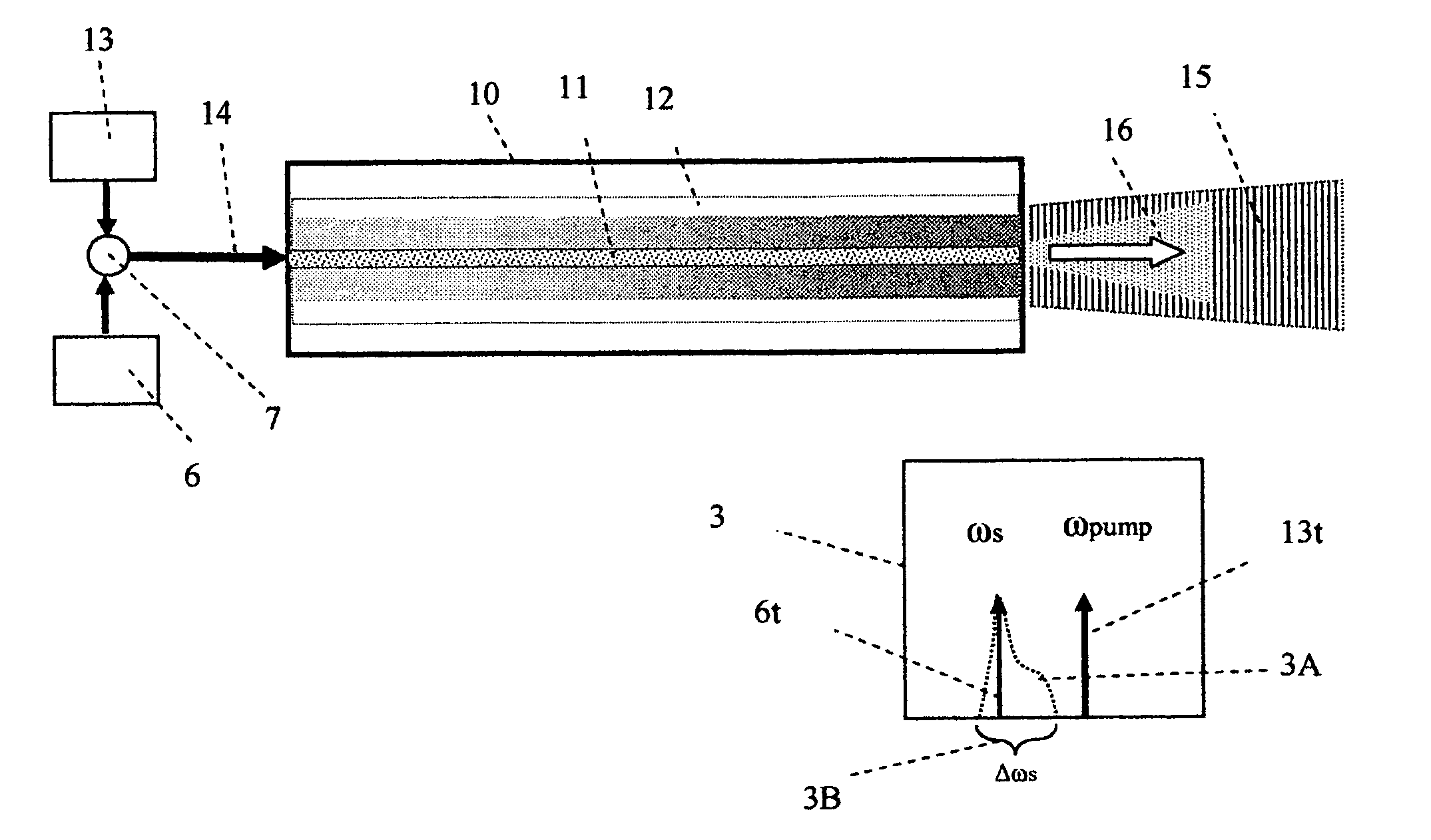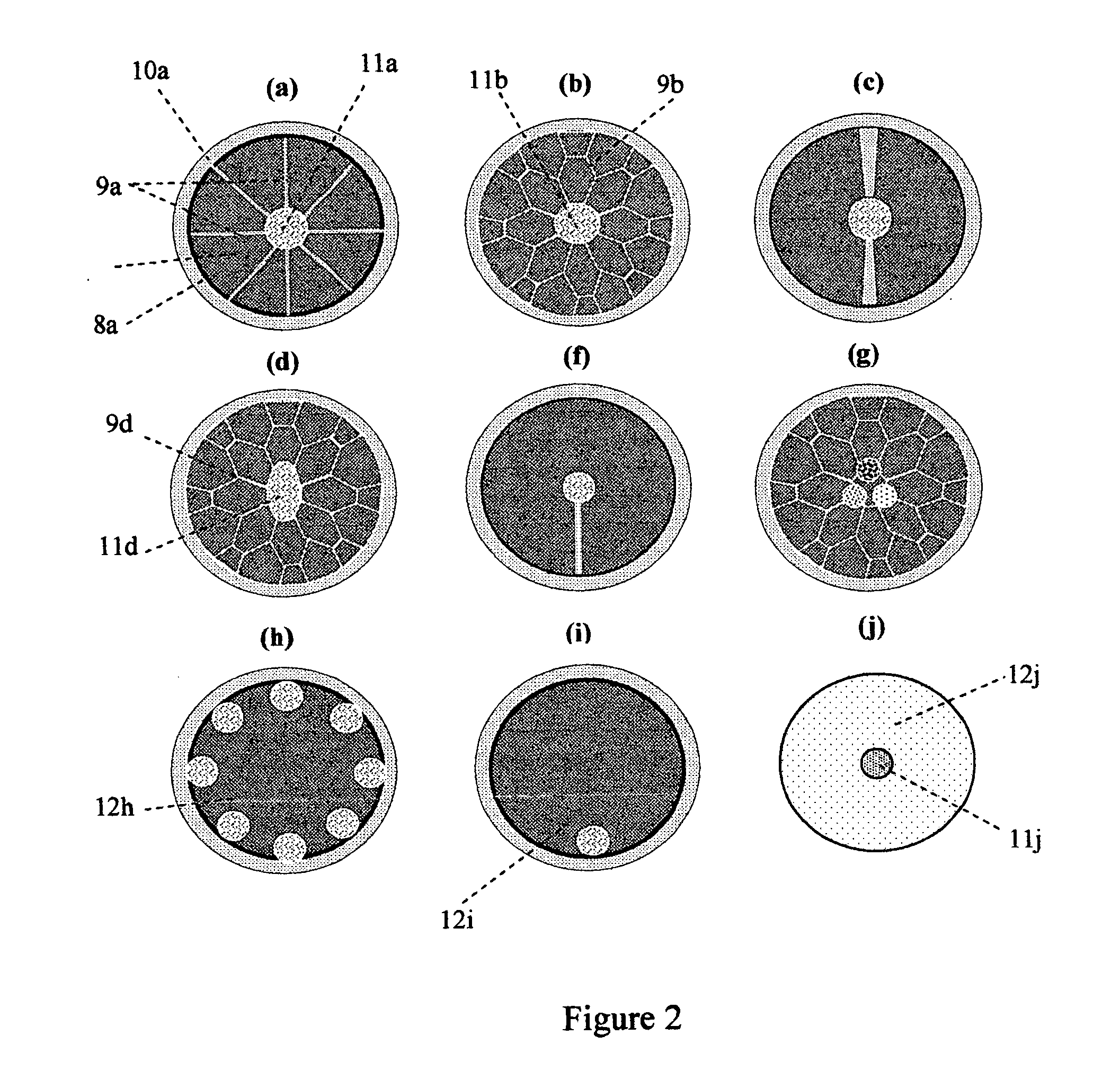Optical terahertz generator / receiver
a generator/receiver and optical terahertz technology, applied in the field of optical terahertz generator/receiver, can solve the problem of quickly reabsorbing generated radiation, and achieve the effect of increasing output power and increasing emitted bandwidth
- Summary
- Abstract
- Description
- Claims
- Application Information
AI Technical Summary
Benefits of technology
Problems solved by technology
Method used
Image
Examples
Embodiment Construction
[0037]FIG. 1 constitutes the most basic terahertz wave generator. In FIG. 1, core 11 is an optical waveguide surrounded by a terahertz waveguide 12, a substantially hollow cladding or terahertz transparent region. In addition, the cladding 12 may be surrounded by substantially terahertz transparent material 10. The surface 8 surrounding cladding 12 may be reflective or transparent to terahertz radiation. Pump source 13 provides optical pumping to core 11 through optical connection 14. Source 13 may be a laser. Further, source 13 may be a tunable laser source. Optical connection 14 may be an optical fiber with a core size compatible with core 11 for optimum coupling efficiency. Alternatively connection 14 may represent a free space focused light coupled into core 11 from pump source 13. The shading 17 represent the increase in generated terahertz wave as light from source 13 is being converted to stokes shifted photons by the core medium 11. Light 16 emerging from the core 11 include...
PUM
 Login to View More
Login to View More Abstract
Description
Claims
Application Information
 Login to View More
Login to View More - R&D
- Intellectual Property
- Life Sciences
- Materials
- Tech Scout
- Unparalleled Data Quality
- Higher Quality Content
- 60% Fewer Hallucinations
Browse by: Latest US Patents, China's latest patents, Technical Efficacy Thesaurus, Application Domain, Technology Topic, Popular Technical Reports.
© 2025 PatSnap. All rights reserved.Legal|Privacy policy|Modern Slavery Act Transparency Statement|Sitemap|About US| Contact US: help@patsnap.com



